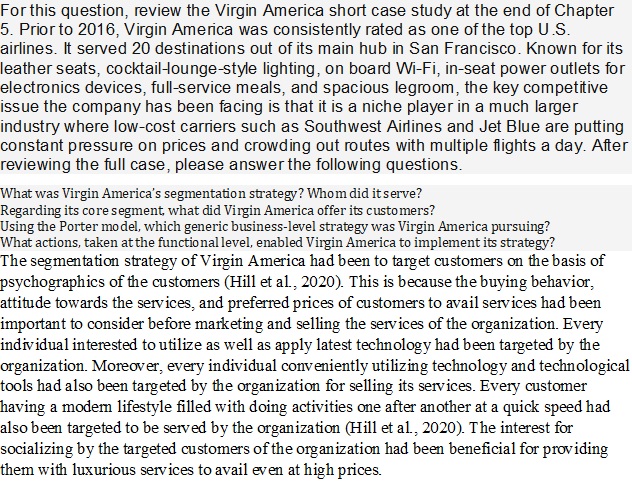


Q For this question, review the Virgin America short case study at the end of Chapter 5. Prior to 2016, Virgin America was consistently rated as one of the top U.S. airlines. It served 20 destinations out of its main hub in San Francisco. Known for its leather seats, cocktail-lounge-style lighting, on board Wi-Fi, in-seat power outlets for electronics devices, full-service meals, and spacious legroom, the key competitive issue the company has been facing is that it is a niche player in a much larger industry where low-cost carriers such as Southwest Airlines and Jet Blue are putting constant pressure on prices and crowding out routes with multiple flights a day. After reviewing the full case, please answer the following questions. 1. What was Virgin America’s segmentation strategy? Whom did it serve? 2. Regarding its core segment, what did Virgin America offer its customers? 3. Using the Porter model, which generic business-level strategy was Virgin America pursuing? 4. What actions, taken at the functional level, enabled Virgin America to implement its strategy?
View Related Questions